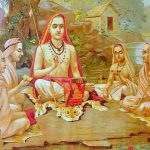The sacred rituals in Sanatan Dharma often carry hidden layers of symbolism. One such ritual of offering the dhatura flower to Lord Shiva may seem strange at first. After all, why would devotees present a toxic plant to the divine? But when seen through the lens of spiritual transformation and mythology, the tradition reveals its true power and purpose.
A Symbol Born from Mythology
According to Hindu mythology, when Lord Shiva consumed poison during the Samudra Manthan to protect the universe, his association with powerful toxins began. Dhatura, a naturally toxic plant, is thus offered to the one deity believed to have the power to neutralize poison, both physical and emotional.
The Significance Behind the Offering
Offering dhatura is a statement of devotion. It represents:
- Letting go of ego, anger, jealousy, and toxic emotions
- Trusting Shiva to transform negativity into purity
- Surrendering one’s impurities for inner peace
Spiritual and Psychological Benefits
Devotees believe this ritual helps:
- Cleanse the mind and reduce inner turmoil
- Protect against negative energies
- Promote growth on the spiritual path
- Aid in attaining moksha or liberation
Dhatura in Shiva’s Worship
Shiva is known to accept what the world rejects. The wild, uncultivated dhatura symbolizes that no offering, however flawed, is priceless if given with true devotion. It’s a lesson in humbleness and divine acceptance.
Mantra and Puja Ritual
During Maha Shivaratri or Shravan month, dhatura is placed near the Shiva Linga while chanting:
“Om Namah Shivaya”
The offering is made with utmost care for divine symbolism. The ritual reminds us that Lord Shiva doesn’t just destroy; he transforms, and so can we, when we surrender our inner bitterness at his feet.
Feature Image Credit: Pinterest.




